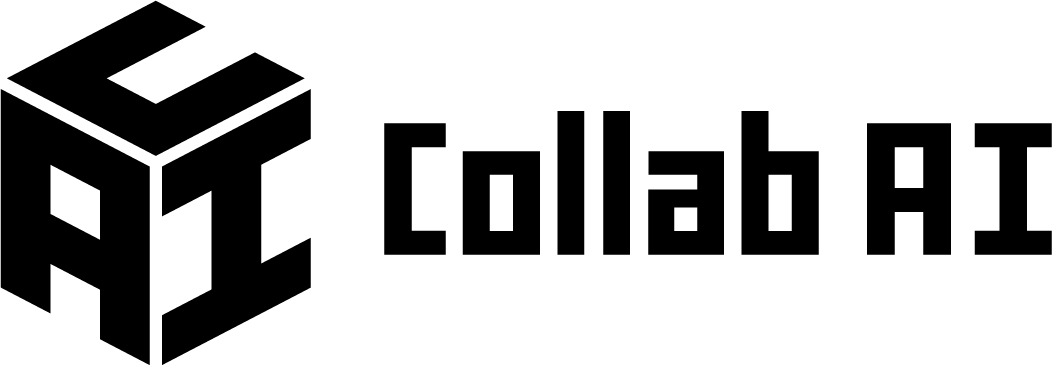With open source AI disrupting the tech scene for the better, one can’t help but ask, “Is open source the future of AI?” What new breakthroughs are approaching? What challenges should we expect? In this blog, we’re going to take a closer look at the major trends and some bold predictions that are shaping the future of open source AI.
Increased Collaboration and Innovation
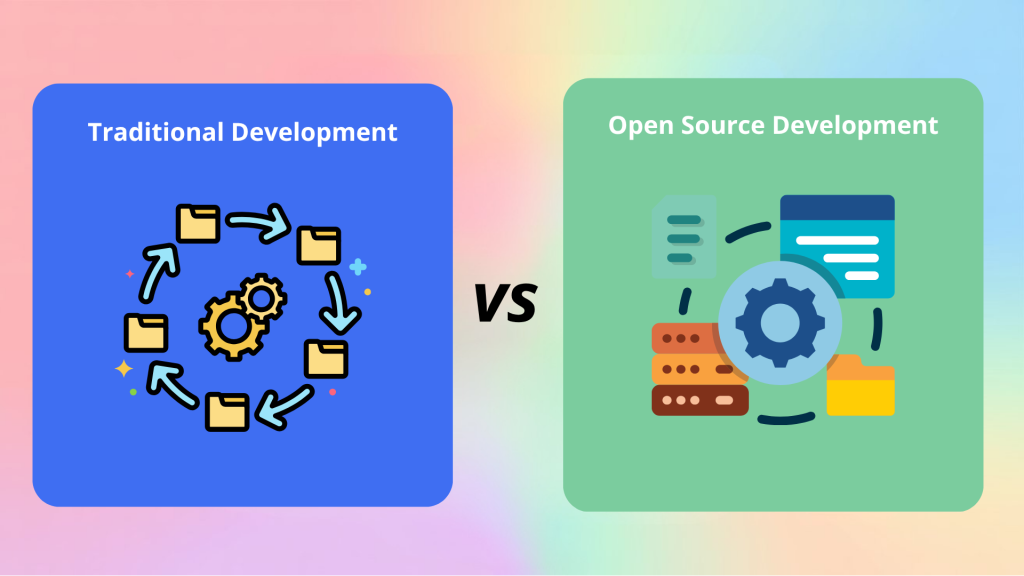
Open source projects have always been about teamwork, you know? With AI and this spirit of collaboration, developers from different industries, regions, and skill levels are sharing code, datasets, and ideas faster than ever. This kind of collaboration is increasing innovation in ways that traditional, closed-source development just can’t keep up with.
So, with open source, there is a cycle of ongoing improvement.
- Quick Turnarounds: So, a developer in Silicon Valley can whip up an awesome algorithm, and just like that, a researcher in Tokyo can jump right in and build on that idea.
- Sharing Ideas Worldwide: Meanwhile, startups in Berlin can easily tweak those innovations for their own needs, all without having to begin from square one.
- Diverse perspectives: Contributors from all kinds of backgrounds add unique insights, which seriously amps up quality.
- Speedy problem-solving: When minds come together to tackle similar issues, breakthroughs come at a speedier pace.
“Big groups like the AI Alliance, which is backed by Meta and IBM, are all about setting up open models and tools for responsible AI use.”
“Companies in the U.S., like Hugging Face, are pushing for open source to be a top priority for staying competitive as a nation, highlighting how it boosts both the economy and innovation.”
Wider Adoption Across Industries
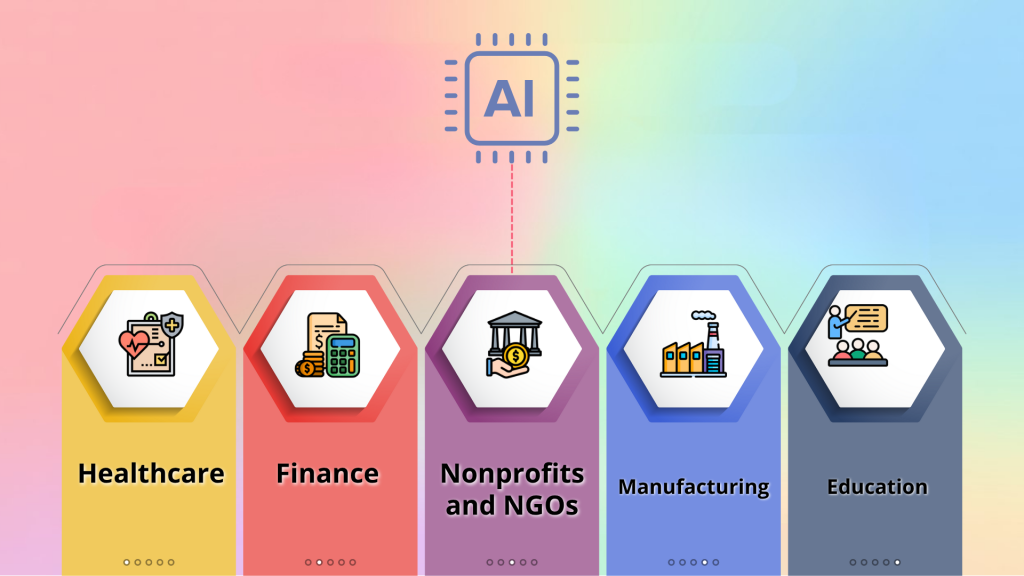
Open-source AI tools are doing good in industries that traditionally relied on proprietary solutions. More than 50% of businesses in the U.S. have started embracing open source AI, particularly in sectors like tech, media, healthcare, and finance. Flexibility and cost savings have made these tools popular.
Here are some industries embracing open source AI:
| Industry | Application |
| Healthcare | Clinics use open-source AI to enhance medical image analysis. |
| Finance | Banks leverage AI to detect fraud and ensure security. |
| Nonprofits and NGOs | Nonprofits harness AI for impactful projects on a budget. |
| Manufacturing | Companies utilize AI to predict equipment issues and ensure quality. |
| Education | Schools apply AI for tailored learning experiences and streamlined admin tasks. |
Open source AI gives organizations the ability to customize tools to meet their specific needs without getting hit with expensive licensing fees. Custom AI wrappers based on open source principles enable companies to craft specialized solutions that would be way too pricey otherwise.
Why are people adopting open-source AI so much?
- Saves money: Avoid pricey licensing fees and vendor lock-in.
- Freedom to customize: Adjust code however you need.
- Transparency: You can see exactly how things work.
- Community support: get help from a global network of developers for troubleshooting and improvements.
In the future, we see more nonprofits and small businesses starting to use advanced AI capabilities through open-source AI wrapper options and platforms. This shift will help level the playing field so smaller players can compete with big names that used to have a monopoly on tech innovations.
Improved AI Wrappers and Tooling
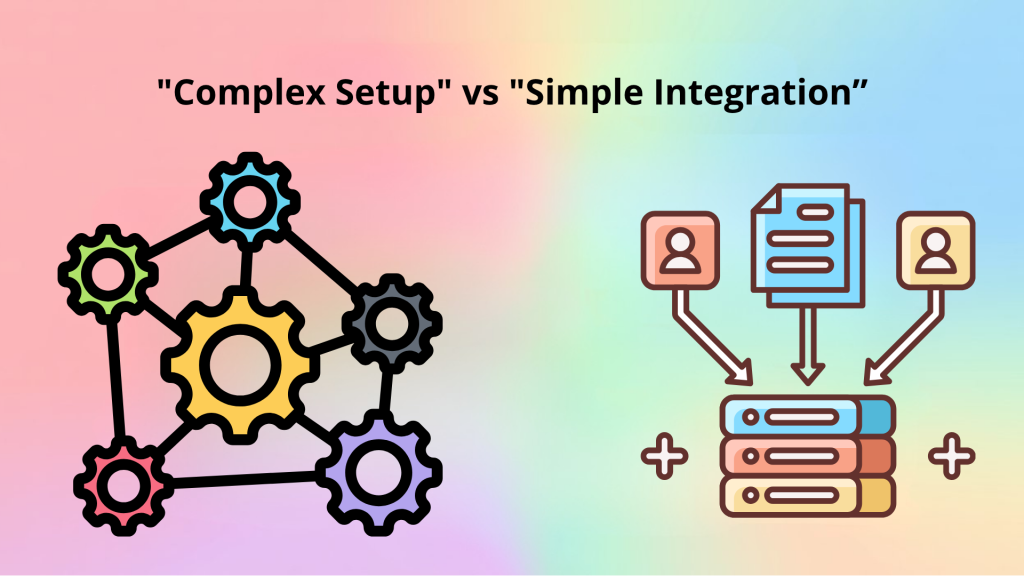
AI wrappers, sometimes called API wrappers or libraries, are popping up everywhere, simplifying the process for developers to integrate and roll out complex models. These custom AI wrappers support various providers and allow for rapid customization and chaining of models.
But you need to look at a few issues in the system:
- Complex setup: Traditional AI implementation often demands a ton of technical know-how.
- Poor documentation: Lots of AI tools don’t come with straightforward guides for beginners.
- Lack of modularity: It can be tricky to adapt existing solutions for unique needs.
- Steep learning curves: AI can feel really daunting for newcomers.
The horizon for AI wrapper libraries is looking pretty bright. Next-gen wrappers will come with improved documentation, modular setups, and user-friendly designs, making it easier for people with limited AI skills to deploy powerful models in no time.
The open source scene is packed with solid, ready-to-use libraries like Hugging Face, LangChain, and TensorFlow. These tools are constantly getting better because of a passionate community of global developers eager to contribute.
Emerging Trends in AI Wrapper Development
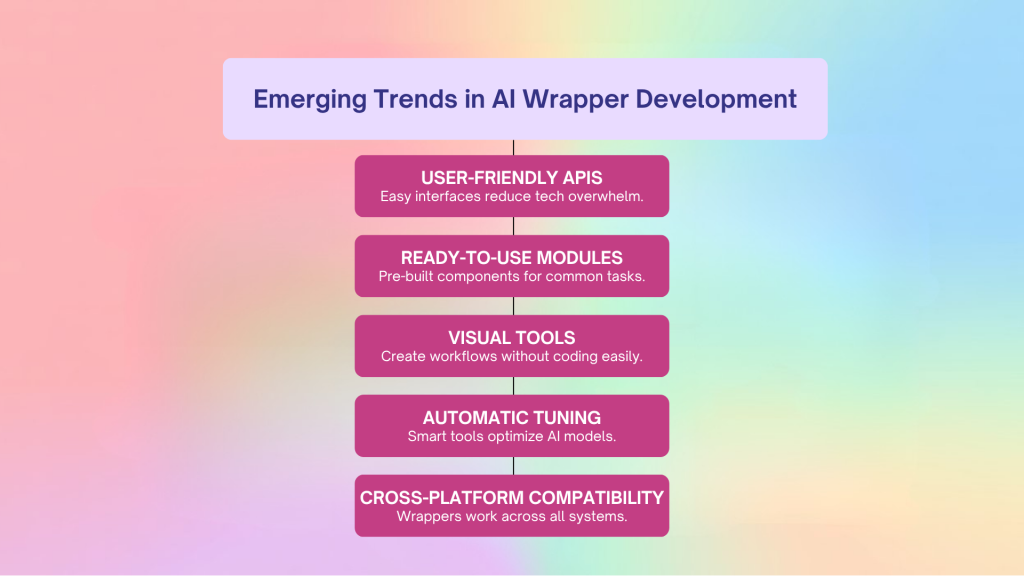
Custom AI wrappers are going to get even more advanced, providing pre-built components for typical use cases while still allowing for personal tweaks. This shift is going to drastically slash the time and expertise needed to roll out AI solutions across a variety of settings.
Ethical and Transparent AI Development
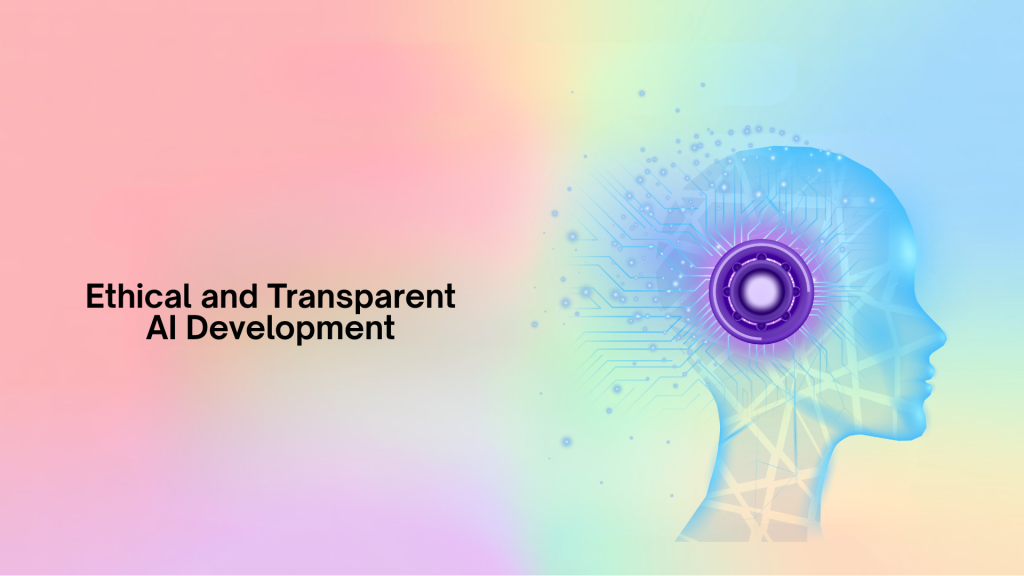
Open source frameworks are at the forefront of ethical AI, promoting transparency, accountability, and community-driven standards for fairness. Initiatives like the “ethical-ai-framework” are all about making sure AI systems respect user consent and autonomy.
With open source, users can look under the hood, audit, and refine the code, which is becoming increasingly vital as AI decisions impact people’s lives in crucial areas.
Here’s where AI transparency really counts:
- Healthcare: For medical diagnoses and treatment recommendations
- Finance: In credit scoring and loan approvals
- Criminal justice: Evaluating risks and sentencing
- Employment: For hiring and promotion decisions
- Education: Assessments and admissions
Open source projects may lead the way to adopt responsible AI and may set a standard that proprietary systems will eventually need to follow.
Perks of Transparent AI Development
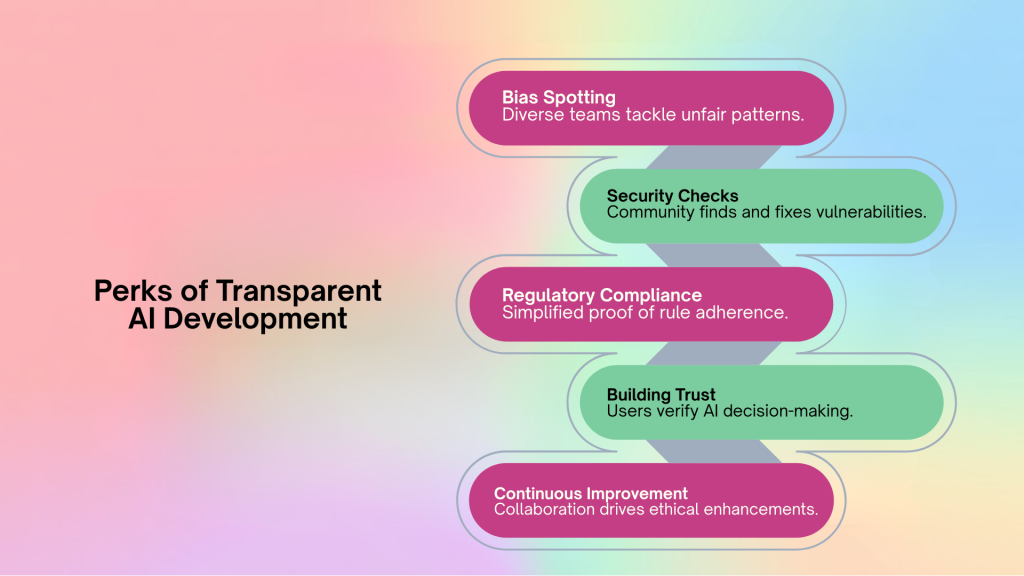
The collaborative nature of open source development acts as a natural safeguard, where varied contributors can flag potential biases or ethical issues. This transparency advantage is going to be even more valuable as regulatory frameworks around AI evolve.
Groups like the AI Alliance are focusing on safety, security, and ethical standards in the development of open AI.
Integration with Cloud and Edge Computing
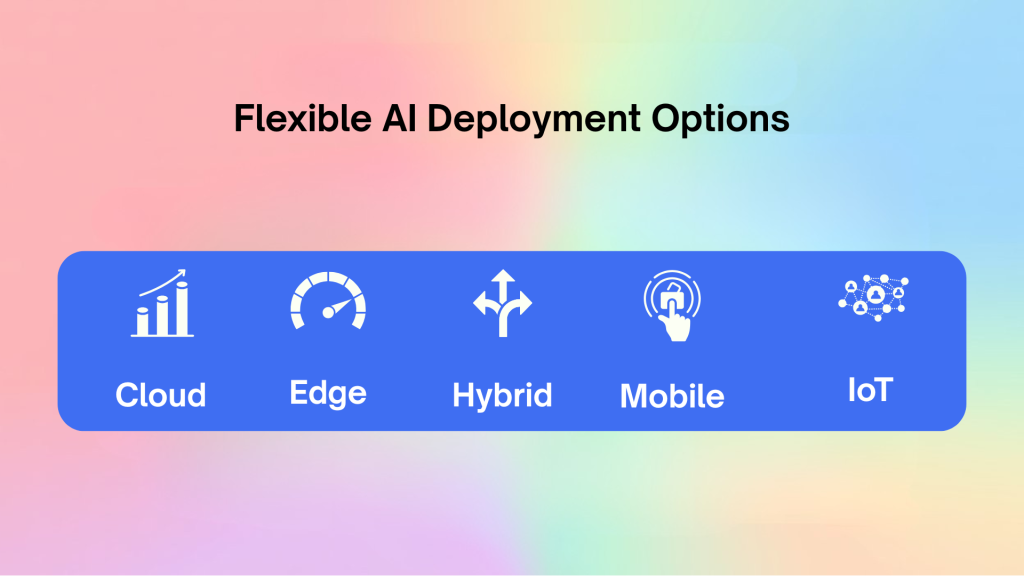
Open source AI models and wrappers are being crafted for flexible deployment across cloud and edge environments, which is huge for real-time and privacy-focused applications.
Take a look at the deployment options open source AI offers:
- Cloud-Based Solutions: Enjoy flexible processing power to train large models and handle tons of data effortlessly.
- Edge Computing: Local devices can process information in real time, cutting down on delays and enhancing privacy.
- Hybrid Setups: Combine cloud training with edge processing for peak performance.
- Mobile Use: AI can operate smoothly right on your smartphones and tablets.
- IoT Integration: Bring AI into smart sensors and connected devices for smarter solutions.
This hybrid model is dramatically expanding the use of AI, especially where timely processing or privacy is key.Open source AI wrapper solutions simplify using the same models across various settings, from cloud training to edge processing. Here are some perks of this flexible deployment:
- Less Lag: By processing data closer to its source, you can speed up response times significantly.
- Privacy: Handling sensitive information locally keeps your data safe from the cloud.
- Cost Savings: You can optimize resources to fit your specific needs, saving money.
- Reliability: You don’t have to rely heavily on network connections for critical tasks.
- Scalability: It’s easy to move from small tests to full production across different platforms.
Challenges: Security and Maintenance
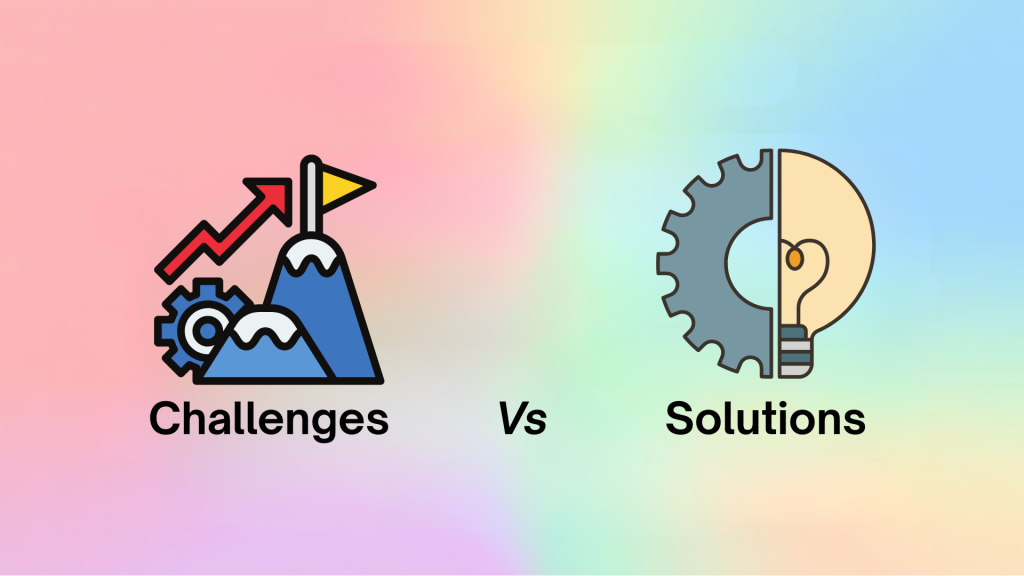
While there are tons of advantages to open source AI, it also comes with its own set of challenges that need to be tackled for ongoing growth and acceptance.
Sure! Here’s a table format for the challenges and solutions related to open source projects:
| Challenges | Description |
| Security Risks | Open code can be vulnerable if not properly protected from malicious users. |
| Inconsistent Upkeep | Some projects might lack regular updates or necessary fixes. |
| Quality Control | Code quality can vary significantly based on contributions. |
| Documentation Issues | Many complex projects lack clear or up-to-date documentation. |
| Dependency Tracking | Keeping track of multiple open source dependencies can be complicated. |
| Solutions and Best Practices | Description |
| Automated Security Scans | Tools that continuously check for vulnerabilities. |
| Community Governance | Structured methods for project management and ensuring quality. |
| Funding Routes | Sustainable financial support for essential open source projects. |
| Code Reviews | Thorough checks before accepting contributions to ensure quality. |
| Support Services | Commercial backing for reliable, enterprise-level systems. |
Security issues and maintenance inconsistencies might slow things down, especially in tightly regulated areas where trust and reliability are key. Still, the open source community is busy tackling these challenges.
The long-term success of open source AI is going to rely heavily on community dedication to maintaining secure, well-documented, and regularly updated projects. We anticipate new governance models and funding solutions to ensure critical open source AI projects have the resources they need for lasting success.
Organizations looking to adopt open source AI will have to build solid security practices and give back to the community, keeping the ecosystem healthy and secure.
The Promise of AI Democratization
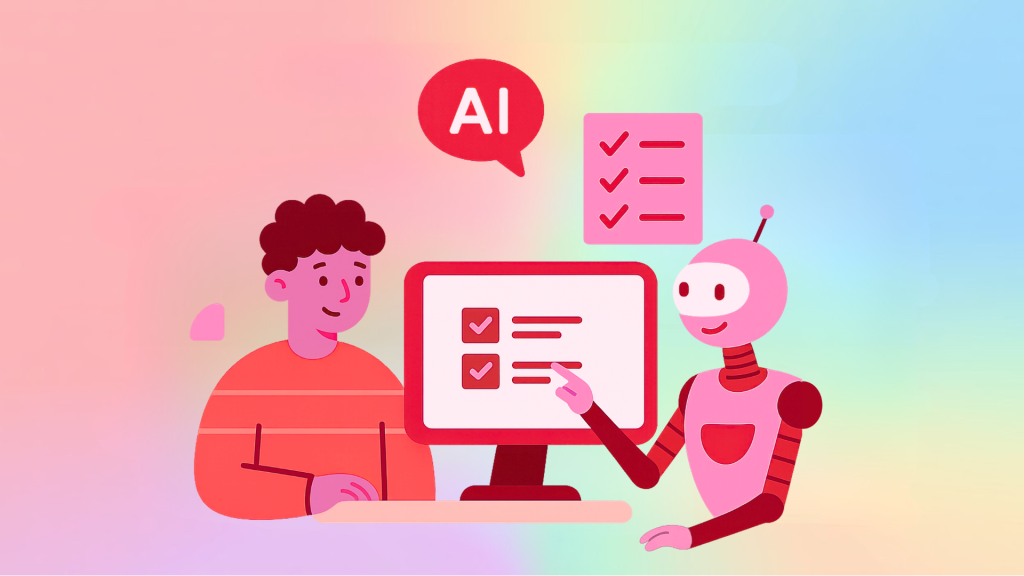
You know what’s the most exciting thing of open source AI? It can make advanced technology accessible to everyone. By 2025 and beyond, we expect open source AI to empower everyday people and small businesses to use sophisticated tools that were once only in the hands of wealthy tech giants.
Now, AI tools are becoming as accessible as word processors or spreadsheets, unleashing creativity and innovation across various sectors.
Who’s going to benefit from the rise of democratized AI?
- Individual developers: They’ll gain access to top-notch AI tools without needing corporate backing.
- Small businesses: They’ll have competitive AI tools at their fingertips without breaking the bank.
- Startups: They can prototype and develop AI-powered products quickly.
- Educational institutions: They’ll access cutting-edge tech for teaching and research.
- Developing countries: They’ll have advanced AI tools without needing major infrastructure.
- Researchers: They’ll be able to build on existing work and push science forward.
Here are some examples of how democratized AI is shaking things up:
- Content creation: Writers tapping into AI for research and editing help.
- Small business automation: Local shops implementing AI-driven inventory systems.
- Educational tools: Teachers crafting personalized learning experiences.
- Healthcare accessibility: Rural clinics using AI for initial diagnosis support.
- Agricultural optimization: Small-scale farmers enhancing crop yields using AI insights.
The impact of this democratization is immense. With advanced AI at the fingertips of anyone with an internet connection and a bit of know-how, we’re sure to see groundbreaking innovations from all kinds of unexpected sources. Startups, independent researchers, and organizations in developing regions will have the same essential AI tools as the largest tech firms.
Conclusion
The outlook for open source AI is shaping up to be incredibly bright! We’re talking about a future where advanced AI capabilities are available to everyone, driving innovation and addressing issues we haven’t even thought of yet. Get in touch with us to know more about the open-source AI wrapper, AI models, and more!
